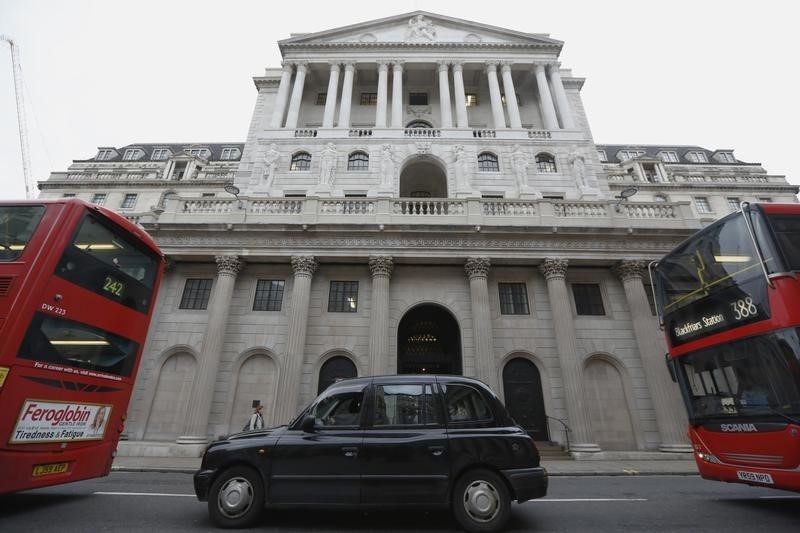Street Calls of the Week
(Bloomberg) -- The Bank of England may need to increase interest rates at a quicker pace than currently envisaged by markets, according to policy maker Michael Saunders.
Spare capacity in the economy has been used up, and, assuming Brexit reaches a smooth conclusion, inflationary pressures will probably build somewhat faster than officials predicted in their latest projections, Saunders said in a speech in Bath, England on Thursday. He’s considered to be the most hawkish member of the Monetary Policy Committee, and has been among the first to push for each of the bank’s two rate hikes since 2017.
“My own hunch is that, conditioned on our Brexit assumptions, capacity pressures will probably build somewhat faster than envisaged in our latest Inflation Report projections, reinforcing upward pressure on pay growth,” Saunders said. “In this case, we would probably need to return to something like a neutral stance rather earlier than implied by the current yield curve.”
Markets are current pricing in fewer than two 25 basis-point increases in the next three years, according to yield curve data published by the BOE. November’s Inflation Report forecasts, made before the latest bout of Brexit turmoil rewrote traders’ outlooks, were based on market measures indicating about three hikes by late 2021.
Speaking on the day that Theresa May’s Brexit plan was met with more opposition Parliament, Saunders also said that the BOE’s “assumption of a smooth Brexit adjustment is itself uncertain.”
Surveys pointed to a “marked” drop in confidence, he said, which “could be reflected in some weakness in near term activity data.” He also reiterated the BOE’s message that the final shape of Brexit could mean policy moving in either direction.
The comments on his monetary policy outlook came at the end of a speech that mainly focused on how Britain’s changing demographics will affect the economy. Saunders said that an aging population pushes down the point at which falling unemployment fans inflation, since older workers are less likely to be jobless than young ones. The trend may also change how interest rates hit demand, since older people tend to borrow less.
